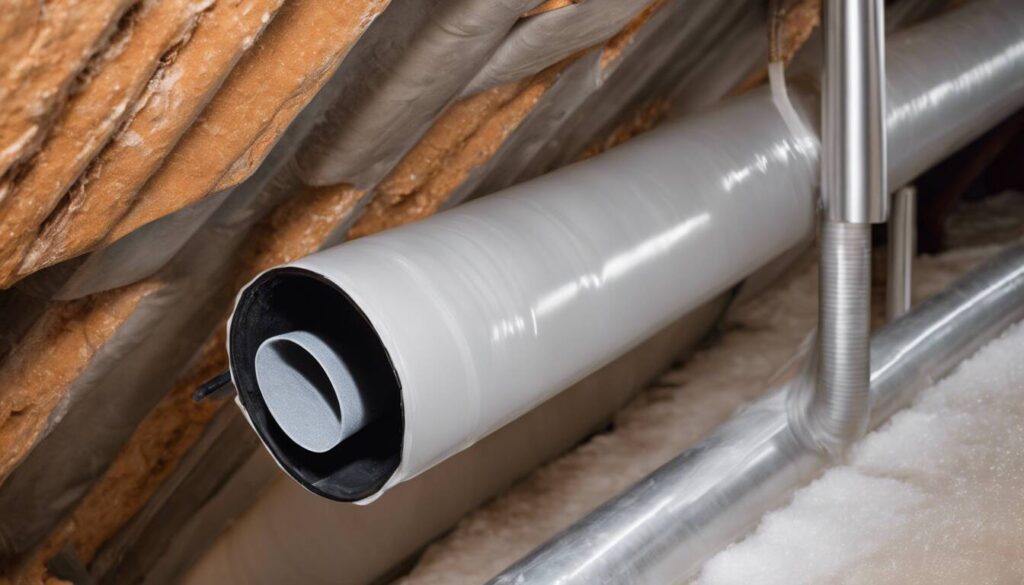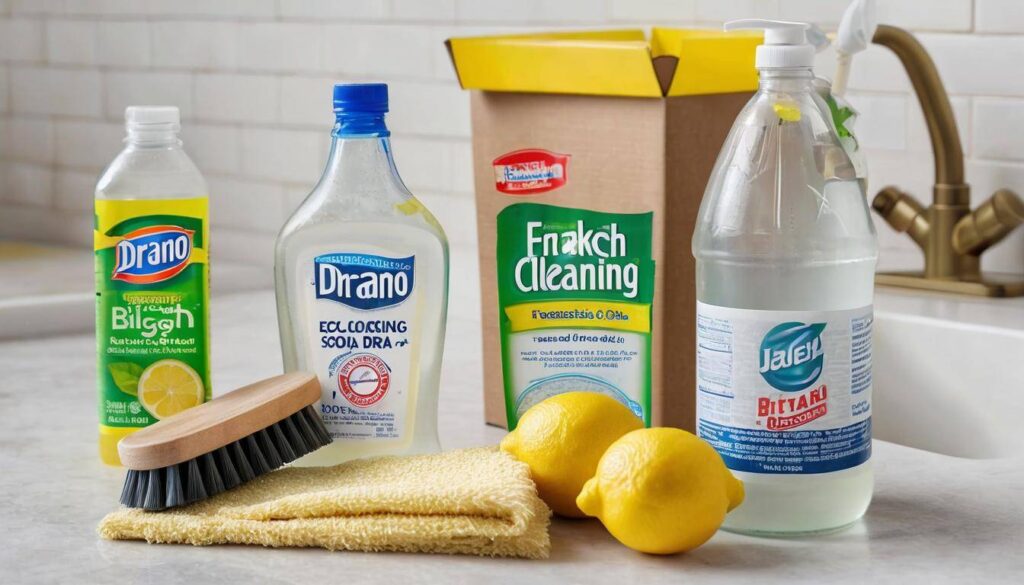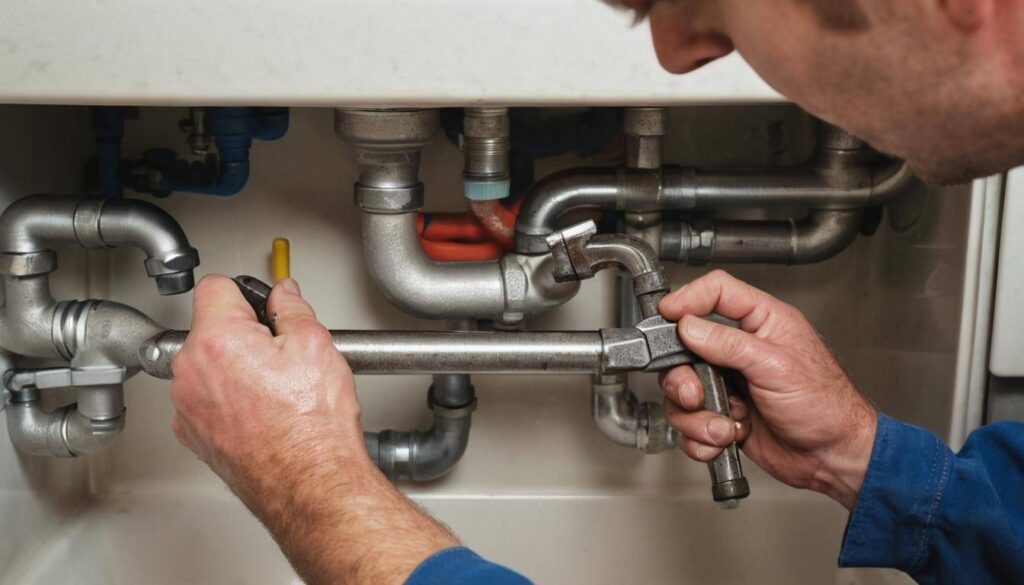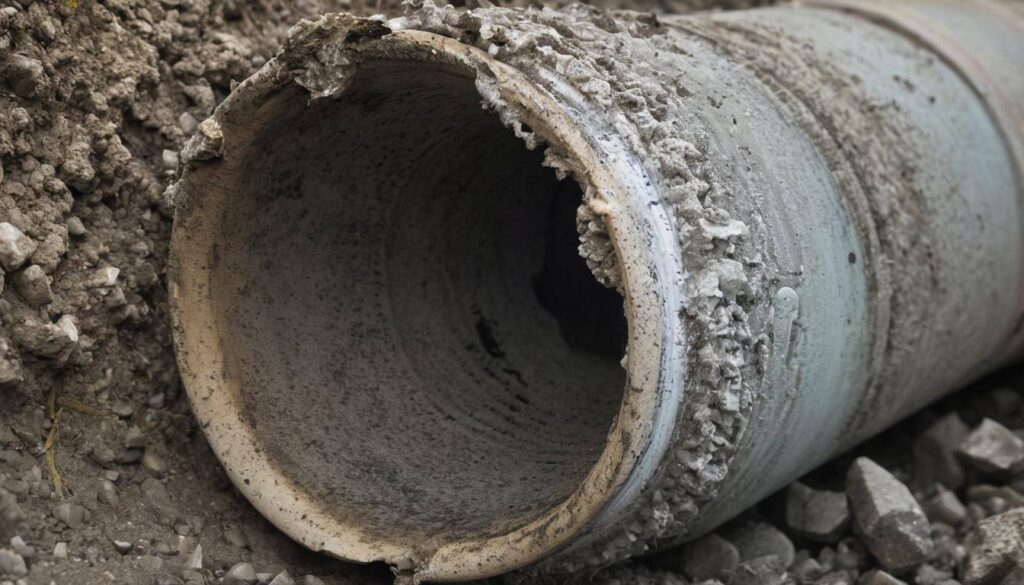How to Prevent Pipes from Leaking in Cold Weather: Winter Plumbing Tips
Preventing pipes from leaking in winter often comes down to effective insulation. Properly insulated pipes are less susceptible to freezing, which in turn mitigates the risk of cracking and leaking. Yet, protection for your pipes goes beyond just average insulation; there are specific methods like pipe sleeves and heat trace tape that offer a more robust safeguard against frigid temperatures. And when it gets seriously cold, even these might need a little help.
To prevent pipes from leaking in cold weather, you can insulate your pipes with foam sleeves or heat tape, keep cabinet doors open to allow warm air to circulate around plumbing, and let faucets drip during extremely cold temperatures to relieve pressure and prevent freezing. Regularly inspecting your plumbing for any signs of wear and addressing them promptly can also help prevent leaks during the winter months.

Effective Insulation Methods for Pipes in Cold Weather
Pipes are like the veins of your home, carrying water to all the places it’s needed. Just as we need to protect ourselves from the cold, it’s important to shield our pipes from icy temperatures to prevent costly leaks and repairs. Here are some tried and true methods to ensure the warmth of your pipes, even during the harshest winters.
Pipe Sleeves and Heat Trace Tape
For those vulnerable spots or exposed pipes that are at a higher risk of freezing, using pipe sleeves and heat trace tape can be a game-changer. The pipe sleeves act as an extra layer of protection, while the heat trace tape helps maintain consistent temperatures to prevent freezing. Together, they form a formidable barrier against the cold that can save you a lot of trouble down the road.
One of the best advantages of these tools is that they are easy to install and can be tailored to fit any length of pipe. This flexibility means you can safeguard every inch of your pipeline network effectively. Additionally, some heat trace tapes are self-regulating, so they adjust their heat output based on the surrounding temperature, making them energy-efficient and reliable.
Foam Insulation
Foam insulation sleeves are another fantastic option for insulating your pipes and providing a protective layer against frigid weather. These sleeves are made from durable materials that can withstand harsh conditions and provide an additional defense against freezing.
They are incredibly simple to install – just slip them over your pipes, and they’ll form a snug protective layer. The foam material works by reducing heat transfer and preventing rapid temperature changes, effectively minimizing the risk of frozen pipes.
Installing foam insulation sleeves is not only a proactive way to prevent pipe damage but also serves as a long-term investment in maintaining the integrity of your plumbing system. By reducing the risk of freezing in cold weather, these insulation methods can save you from potential water damage and significant repair costs.
By utilizing these insulation methods, you can significantly reduce the likelihood of frozen pipes and potential leaks during winter. But the protection doesn’t stop there—let’s continue exploring more ways to keep your pipes safe during the colder months.
Detecting Leaks and Drafts
After taking the right steps to properly insulate your pipes, it’s equally crucial to keep an eye out for signs of leaks, cracks, and drafts. Let’s explore two key methods for detecting these pesky problems—visual inspection and pressure testing.
Visual Inspection
Regularly examining exposed pipes for any signs of leaks, cracks, or visible condensation can provide vital insights into the condition of your plumbing system. Check for water accumulation, as even small amounts of water can indicate a leak. Condensation can be a telltale sign that the pipe is not adequately insulated, and this moisture can lead to frozen and burst pipes when temperatures drop. Take a close look at joints and connections, as these are common areas where leaks may occur. Note any corrosion, discoloration, or bulging—these can all point to potential issues with the pipe’s integrity.
Pressure Testing
In addition to visual inspections, periodic pressure testing is a valuable method for identifying leaks within your plumbing system. By conducting pressure tests, you can detect any unexpected drops in pressure that may indicate leaks. This involves using specialized equipment to pressurize the pipes and monitoring the pressure levels over time. A significant drop in pressure signals the presence of a leak somewhere in the system.
For instance, imagine a picnic balloon that slowly loses air over time due to tiny holes or punctures. Similarly, if your plumbing system experiences an unexplained pressure drop, it is indicative of a problem requiring immediate attention.
By regularly performing visual inspections and pressure testing, you can proactively identify and address potential leaks and drafts in your plumbing system, ensuring that your pipes remain secure and reliable throughout the cold winter months.
As we’ve seen how important it is to detect early signs of leaks and drafts, let’s now delve into effective methods for safeguarding your pipes—choosing materials and techniques such as caulk, tape, and foam insulation.
Choosing Materials and Methods: Caulk, Tape and Foam Insulation

Preventing pipes from leaking in cold weather requires careful planning and the right materials. Winter can be tough on pipes, especially when they are exposed to the elements or not properly insulated. Two essential methods for protecting pipes include using caulk and weather stripping to seal gaps, and foam insulation to wrap around pipes in vulnerable areas such as attics, basements, and crawl spaces.
Caulk acts as a protective sealant that fills in the gaps around the pipes, windows, or doors. It acts as a barrier against cold air seeping in and causing potential freezing. Weather stripping is a flexible rubber-like material that you can put around the edges of doors and windows to keep out drafts. Using these two together can help lock in warmth and keep out the cold effectively.
In addition to caulking and weather stripping, foam insulation is another great option for preventing frozen pipes. Foams are easy to apply and conform to irregular shapes making them perfect for insulating tight spots around your pipes. It acts as a cozy jacket, wrapping pipes snugly to protect them from frigid temperatures.
Weather stripping and foam insulation work together to create a strong barrier against cold air. The combination ensures that every part of your plumbing system is protected from freezing temperatures. It’s like bundling up your pipes nice and warm for winter—just like how you’d dress in layers to stay warm outside on a chilly day.
Imagine it this way: when you’re outside on a cold day with just a light jacket, the wind still finds its way through, leaving you feeling chilly. But if you add layers like an undershirt, sweatshirt, and a coat, you’re better protected against the cold. In the same way, using caulk, weather stripping, and foam insulation together provides multiple layers of protection for your pipes.
By combining caulk, weather stripping, and foam insulation, you create an impenetrable shield against the harsh winter elements for your pipes—keeping them safe from freezing temperatures and potential leaks.
Now that we’ve covered how to protect your plumbing from the cold weather, let’s shift our focus to ensuring healthy air pressure levels within your home.
Maintaining Healthy Air Pressure Levels
When winter sets in with its icy grip, our pipes become vulnerable to freezing. One way to combat this is by ensuring there’s healthy air pressure inside them. When water freezes, it expands, putting immense pressure on the pipes, leading to cracks and disastrous bursts.
So how do we ensure healthy air pressure levels? One effective method is to let faucets drip slightly. This constant movement relieves the pressure buildup from ice forming and helps prevent potential pipe bursts.
Additionally, opening cabinet doors beneath sinks allows warm air to circulate around the pipes, maintaining a more stable temperature and reducing the risk of freezing.
The Science Behind Dripping Faucets
Let’s consider this from a simple science standpoint. Moving water is much less likely to freeze than stagnant water. The constant flow disrupts the formation of ice within the pipes, preventing pressure from building up and safeguarding against potentially costly damage.
It’s like how a river doesn’t freeze as easily as a pond during snowy winters. By keeping water moving, it reduces the risk of freezing.
By undertaking these simple precautionary measures during periods of extreme cold, you’re actively safeguarding your plumbing system against potential damage caused by frozen pipes. When it comes to your home’s plumbing, a little preventive action goes a long way.
As we’ve seen, taking proactive steps in maintaining healthy air pressure levels can prevent costly damage due to frozen pipes. Now, let’s shift our focus to delve into the repair and preventative measures for leaks.
Repair and Preventative Measures for Leaks
Dealing with a leak? Despite its size, leaks can quickly escalate into much bigger issues if not handled promptly. Ignoring a small leak can lead to water damage, mold growth, and even compromised structural integrity. To prevent costly repairs down the line, it’s crucial to address any and all leaks as soon as they’re identified.
A small leak might seem harmless at first, but prolonged exposure to water can weaken structures, create breeding grounds for dangerous mold spores, and cause damage to your possessions. And these consequences are just the tip of the iceberg when it comes to plumbing problems.
Swift Repairs: Contacting a professional plumber is essential to ensure that the leak is accurately identified and effectively fixed. With our expertise, we can swiftly tackle even the most stubborn leaks, preventing them from turning into a disaster that demands extensive repairs and restoration later on.
Preventative Actions
Apart from addressing existing leaks, it’s equally important to take preventative actions against future leaks. What can you do to protect your pipes from potential damage?
Pipe Sealants and Heat-Resistant Tape: Applying pipe sealants or wrapping problem areas with heat-resistant tape are proactive measures that can safeguard your pipes against potential leaks. These products act as a protective barrier, reducing the risk of corrosion, erosion, and subsequent leaking.
Using high-quality pipe sealants helps fill in any microscopic fissures in the pipe material, preventing water from seeping through. Similarly, heat-resistant tape is particularly effective for insulating vulnerable spots in your pipes, especially if they are located in unheated areas of your home.
Some might argue that these measures aren’t necessary, but considering the potential damage caused by undetected leaks, taking steps to prevent them seems like a smart move.
By swiftly addressing existing leaks and implementing preventative actions, you’re actively safeguarding your property from costly repairs and preserving the integrity of your plumbing system for years to come.
And now that we’ve secured our pipes against leaks in cold weather, let’s turn our attention to safe thawing techniques for frozen pipes.
Safe Thawing Techniques for Frozen Pipes
When the temperature drops, one of the biggest concerns for homeowners is to prevent their pipes from freezing. But sometimes, despite all precautions, pipes do freeze. If you find yourself in this situation, it’s important to deal with it carefully to avoid causing damage. Here are some safe thawing techniques to help you get your pipes flowing again without risking further complications.
Warm Towels and Heat Lamps
Using warm towels or heat lamps to gently thaw frozen pipes can be effective without posing the risk of damaging the pipes. Wrap the affected section of the pipe with warm towels or apply a heat lamp close to the frozen area. The gentle warmth will gradually melt the ice inside the pipe without applying direct, intense heat that could cause the pipe to crack or burst.
This method requires patience but is a safe and reliable way to bring your pipes back to working condition.
Open Faucets
Another important step in safely thawing frozen pipes is to open the faucets connected to the affected pipes. By allowing a slow drip from the faucet, you can release pressure within the system, which can aid in thawing the ice within the pipes.
This simple act of allowing water to flow out, even if it’s just a trickle, helps prevent excessive pressure buildup due to expanding ice, reducing the risk of a burst pipe caused by ice blockage.
By combining these methods with careful monitoring of the affected areas, you can safely and effectively thaw your frozen pipes without causing further damage.
Thawing frozen pipes requires patience and care, but with these safe techniques, you can tackle the problem without risking damage to your plumbing system.
If you find yourself dealing with frozen pipes this winter season, remember that a gentle approach combined with vigilance can help resolve the issue without causing more harm. Take care of your home’s plumbing system and ensure you maintain its integrity through any frosty weather. If you need professional assistance or have specific concerns about your plumbing, don’t hesitate to call or text us for an estimate at 587 707 0606.



